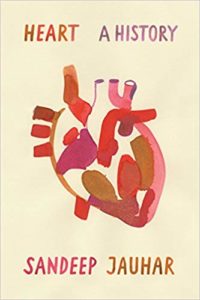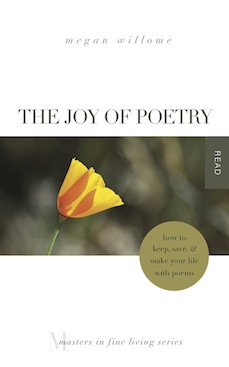The podcast ScienceFriday has been a reliable source of book recommendations, and such was the case on November 9, when I heard an interview with cardiologist Dr. Sandeep Jauhar called “Mysteries of the Heart.” Jauhar is the director of the Heart Failure Program at Long Island Jewish Medical Center, he is the author of two previous books, and he is an op-ed writer for The New York Times. The episode discussed his latest book, Heart: A History.
What caught my ear and caused me to read the book was the word “mystery” — how can an organ we’ve studied so thoroughly and managed to treat so well still surprise us?
The answer? Metaphor.
The heart is an organ, sure, and Jauhar describes in thorough, not-for-the-squeamish, detail about how advances in treatment of heart disease have come about. But he recognizes the heart is also a metaphor. Every chapter opens with an actual patient’s experience, including that of Jauhar and his family.
As a writer, Jauhar is aware of the many ways we use the word “heart” in English to refer to something other than the actual organ. As a doctor who studies cardiac failure, he is also aware that metaphor sometimes comes closer to describing heart failure than medicine.
Every note I highlighted in this book is about this interaction between what a word or phrase with the word “heart” actually means and what it metaphorically means. And just in case you think I’m approaching this book too much like an English major, Jauhar titled part 1 of the book “Metaphor.” In that section he writes, “If the heart bestows life and death, it also instigates metaphor: it is a vessel that fills with meaning.”
Jauhar, born in America to Indian parents, says these metaphors exist across cultures. He mentions many phrases we use all the time: “take heart,” “speak from the heart,” “learn by heart,” “take something to heart,” “change of heart,” “get to the heart,” and that special place, our “heart of hearts.” What does all that language have to do with the actual heart, that four-chambered organ at the center of our being? A lot — that, we know. How much do the two interrelate? That, we don’t fully know. That’s why part 3 is titled “Mystery.”
In other words, it is increasingly clear that the biological heart is extraordinarily sensitive to our emotional system — to the metaphorical heart, if you will.”
As fate would have it, Maryanne Wolf, author of the book that inspired this column, appeared on SciFri the following week, in a segment titled You Are How You Read. In Reader, Come Home she says reading metaphor is powerful because it activates multiple parts of the brain. For example, reading a metaphor about texture stimulates the region responsible for touch.
That means reading this book about the the heart affected the way my brain interacted with my actual heart. A couple of times I got anxious, thinking of various emotional stresses my heart has suffered. Other times I relaxed, thinking of the physical and spiritual things I do to benefit my heart. It would have been interesting if I could have been hooked up to an EKG while reading.
After so many years in the business, I see heart shapes everywhere: in the splash of raindrops on my windshield, in the beets I slice in my kitchen, in strawberry slivers and bitten cherries.”
I see them everywhere too. I put heart emojis into texts, to communicate love. I know how to cut hearts out of a folded piece of paper to make a valentine. It’s a daily shape in my life. And after reading this book, I’ll see that shape differently.
If I hear the phrase “broken heart,” I’ll think of cardiac arrest. If a sermon mentions people hardening their hearts, I’ll picture clogged arteries. If a friend tells me she’s “lost heart,” I may want press her to tell me what things she is doing to take care of her physical heart.
Because there is a reason we use phrases like “take heart” when we want someone to be brave. When bravery is needed, the actual heart works harder.
November’s Pages
Finished
Poetry
The Crossover, Kwame Alexander (Join us for this Children’s Book Club selection, December 14!)
Life on Mars, Tracy K. Smith (Pulitzer-winner for poetry, from the current U.S. poet laureate)
Adult
Dancing Prophet, our own Glynn Young
The Haunting of Hill House, Shirley Jackson (If you’ve read this 1959 classic, please contact me. And the Netflix series doesn’t count.)
Heart: A History, Sandeep Jauhar
Early Readers and Picture Books
The Christmas Day Kitten; The Market Square Dog; Moses the Kitten; Oscar, Cat-About-Town; Only One Woof, all by James Herriot (HT Katie, in the post about bedtime stories)
Middle Grade and YA
Dear Evan Hansen, Val Emmich (a novelization of the Tony Award-winning musical)
Made Progress
The Odyssey, Homer, transl. Emily Wilson (Listening along with Overdue’s subpodcast: Stop! Homer Time)
Your turn
1. What books have deepened your understanding of metaphor?
2. Did you make some time for deep reading this month? What stories stirred your soul?
3. Share your November pages. Sliced, started, and abandoned are all fair game.
Photo by Rosalee Yagihara, Creative Commons, via Flickr. Post by Megan Willome, author of The Joy of Poetry.
Browse more Reader, Come Home
“Megan Willome’s The Joy of Poetry is not a long book, but it took me longer to read than I expected, because I kept stopping to savor poems and passages, to make note of books mentioned, and to compare Willome’s journey into poetry to my own. The book is many things. An unpretentious, funny, and poignant memoir. A defense of poetry, a response to literature that has touched her life, and a manual on how to write poetry. It’s also the story of a daughter who loses her mother to cancer. The author links these things into a narrative much like that of a novel. I loved this book. As soon as I finished, I began reading it again.”
—David Lee Garrison, author of Playing Bach in the D. C. Metro
- Perspective: The Two, The Only: Calvin and Hobbes - December 16, 2022
- Children’s Book Club: A Very Haunted Christmas - December 9, 2022
- By Heart: ‘The night is darkening round me’ by Emily Brontë - December 2, 2022



Glynn says
Excellent reading list, Megan! (I hope you enjoyed it.)
I read The Haunting of Hill House way back in high school. You can tell me if I’m wrong in what I remember, but there is one character who sleeps on her left side because she thinks it will wear out her heart faster (which sort of fits with the heart theme).
Read in November:
Mystery
The Discourtesy of Death by William Brodrick
Death’s Confessor by P.J. Bryant
The Unlucky Woman by Jonathan Dunsky
The King’s Justice by E.M. Powell
The Mother’s Day Mystery by Peter Bartram
Bats in the Belfry by E.C.R. Lorac
Fiction
Lights on the Mountain by Cheryl Anne Tuggle
Two Struck Images by Philip Bryant
Mayfly by Joe White (play)
The Boy in the Striped Pajamas by John Boyne (a YA novel that really isn’t)
The Tower Treasure by Franklin Dixon (I reread the first of the Hardy Boys series)
The Wake Up by Catherine Ryan Hyde
Insight by Deborah Raney
Hosea’s Heart by Linda Rondeau
The Baker’s Secret by Stephen Kiernan
Non-fiction
Life in the South During the Civil War by Diane Yancey
Life in the South During the Civil War by James Reger (that’s two with the same title)
Poetry
Tropic of Squalor by Mary Karr
Planet-Shaped Horse by Luke Kennard
A Season in Another World by Matt Duggan
The Hanging God by James Matthew Wilson
Cartoons
The Days Are Just Packed by Bill Watterson (I’m still a Calvin and Hobbes fan, in spite of the fact our oldest son considered Calvin and Hobbes a training manual)
Megan Willome says
Glynn, yes, I am really glad I read it, and I want to talk more. I’ve needed to let “Dancing Prophet” sit with me for a few days since I finished.
I missed that heart detail from “Hill House” (read it twice!) but it sure feels right.
I’ve heard about Boyne’s “The Boy in the Striped Pajamas” but have not yet read it.
Calvin and Hobbes is sheer brilliance, through and through.
Sandra Heska King says
I want to be like you when I grow up, Glynn.
Maureen says
I’m still reading ‘Hue’. It’s a long and very good book.
Just finished Rob Schenck’s ‘Costly Grace’ and thinking of interviewing him. Talk about a transformation! I heard Schenck speak and also met him in Alexandria two Sundays ago. He could not have chosen a more apt title for his book.
Reading Michele Obama’s ‘Becoming’. Did you know the president was once her summer associate when he interned at the Chicago law firm that employed her? She tried to resist but. . . we know how unsuccessful that was.
Also reading the marvelous ‘Monument’, Natasha Trethewey’s collection of new and selected poems. And reading more Tony Hoagland.
I won a copy of ‘Milkman’, which has yet to arrive. If it comes before Christmas, I’ll pack it to take with me.
Megan Willome says
Maureen, I love Natasha Trethewey, and especially that particular poem (“Monument”).
I actually did know that about the Obamas. If you’re looking for a sweet, breezy film about their first date, I highly recommend “Southside With You.”
Maureen says
I know of it but haven’t seen the movie. Thanks.
Sandra Heska King says
I’ve downloaded Dr. Jauhar’s book. I’d rather have paper, but it doesn’t come out until next year. I love anything to do with the heart–and all the metaphors related to it. Some believe that President Bush died of a broken heart–or maybe it was a longing heart. Akhmatova’s heart finally gave out. I have a murmuring heart. We get poetry by heart. And there are so many songs about the heart.
– I’ve read Luci Shaw’s The Eye of the Beholder. Love me some Luci.
– I’m working on Anatoly Nayman’s Remembering Anna Akhmatova that came after I finished my post.
– I’ve begun a little devotional book called O Wisdom: Advent Devotions on Jesus. Our own Donna has some art in it. Technically, I guess that will become a completed book in December.
-I’m reading Luci and Madeleine’s WinterSong again.
Megan Willome says
Ooh, I have not read “WinterSong”!
I do have one criticism of the book–too many uses of the word “seminal.” One per book, is my rule. But as a nurse, I think you’ll get a lot out of it, Sandy.
L.L. Barkat says
It always fascinates me to consider the origins of phrases. We kind of assume it’s arbitrary, but it’s often connected to deep human experience or intriguing history—and I’m so delighted to read about all these heart phrases you’ve brought to our attention afresh.
These discoveries we are making about the heart’s true connection, on a physical level, involving the vagus nerve, with emotion and compassion (or lack of it) seems to have important implications. Yes, one could die of a broken heart. But one could also be heartened, by hope or love or dreams. I like to muse on these things.
To take care of my own heart, which becomes so carried away when I read (I’m always “putting my heart into” everything, as I learn about new needs and new ideas), I’m actually taking a reading hiatus. Minimum of one week. I might extend. We’ll see. (Instead, I’ve been sitting outside, listening to music, cleaning, walking, doing yoga, drinking tea, talking to my girls).
But, before I ascended into a reading-free zone, I made some progress with Eager, got inspired by The Magic Shop, and did some clarity-seeking through Parker Palmer’s Let Your Life Speak.
Laura Brown says
A reading hiatus! That surprises me, but then maybe it doesn’t. Interesting that it’s partly an act of caring for your own heart.
Megan Willome says
L.L., I hope you report back to us on the effects of your hiatus. Might be good food for thought (to use another overly-used phrase).
Laura Brown says
“When bravery is needed, the actual heart works harder.” I want to know more about that.
Years ago (let’s see, 2001), Gail Godwin wrote a fascinating book about the heart, “Heart: A Personal Journey Through Its Myths and Meanings.” It might interest you.
https://www.gailgodwin.com/book-page.php?isbn13=9780380808410
I didn’t keep track of my reading this month, but as I recall:
FICTION
Finished “Jayber Crow” by Wendell Berry. [heart emoticon]
“The Great Divorce” by C.S. Lewis
NONFICTION
“Bluets” by Maggie Nelson (didn’t finish)
Part of “Travels with Charley” by John Steinbeck
Part of “All the Colors We Will See” by Patrice Gopo (reading slowly, digesting, savoring)
“True You” by Michelle DeRusha (still reading)
“The Empathy Exams” by Leslie Jamison (still reading, partly rereading)
“Make a List: How a Simple Practice Can Change Our Lives and Open Our Hearts” by Marilyn McEntyre (just dipped into it, expect to be using it for some time to come)
POETRY
“Joy,” an anthology edited by Christian Wiman (just started and again, I’m savoring it, taking it slow)
“The Best American Poetry 2018,” edited by guest editor Dana Gioia (slowly, still reading)
Megan Willome says
Yes, “Jayber Crow” definitely deserves a heart.
Some books demand slowness, poetry especially, I think.
Another friend recommended the “Make A List” book, so I think that’s three, which is usually my magic number.